East Africa’s Super Tuskers: The Last Photos of The “Elephant Queen”
Having lived for more than 60 years,in a peaceful and quiet corner of Tsavo in Kenya, she was an extraordinary and rare sight to see, British photographer Will Burrard-Lucas captured the last photos of the legendary “Elephant Queen”.
She was also known as a “tusker or “super-tusker”, one of the very few elephants that have genetics resulting in them having very long tusks. In 2016 it was estimated that only 30 of these elephants are still alive in Africa. Another well-known tusker from Kenya was an elephant named Satao. He died in May 2014 after being killed by poachers.
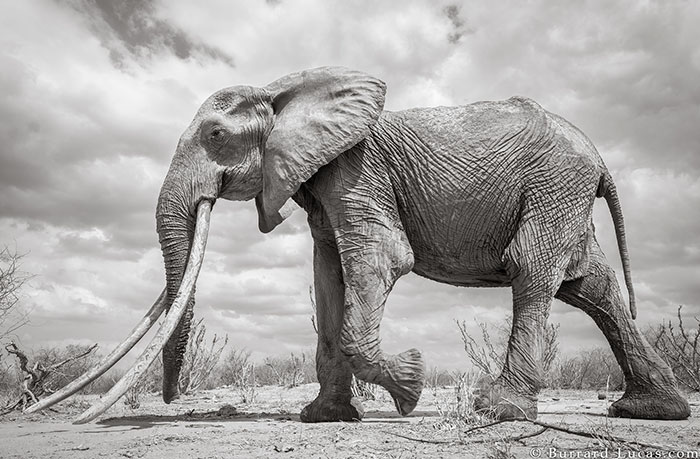
Image by Will Burrad-Lucas
Her tusks were so long that they would scrape the ground as she walked.
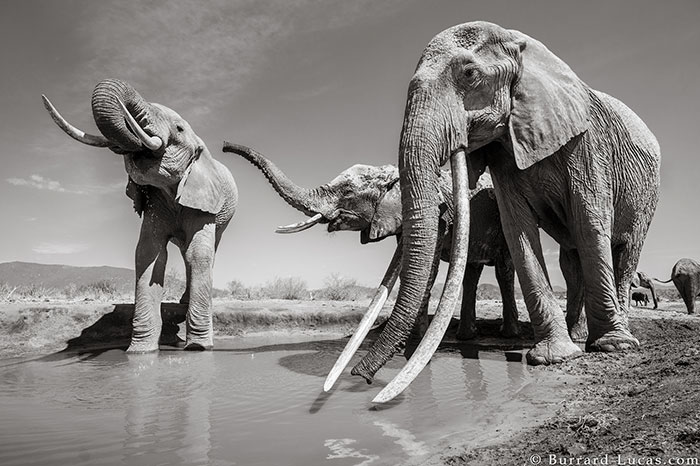
Image by Will Burrad-Lucas
The Elephant Queen survived some terrible poaching periods, however, she had lived a full life and died of natural causes. During Will’s time in Kenya, ongoing drought and food scarcity made it hard for many of the animals in the area to survive.
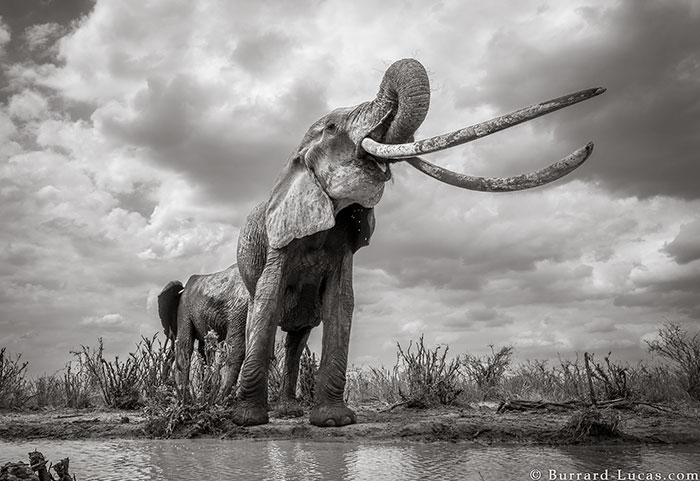
Image by Will Burrad-Lucas
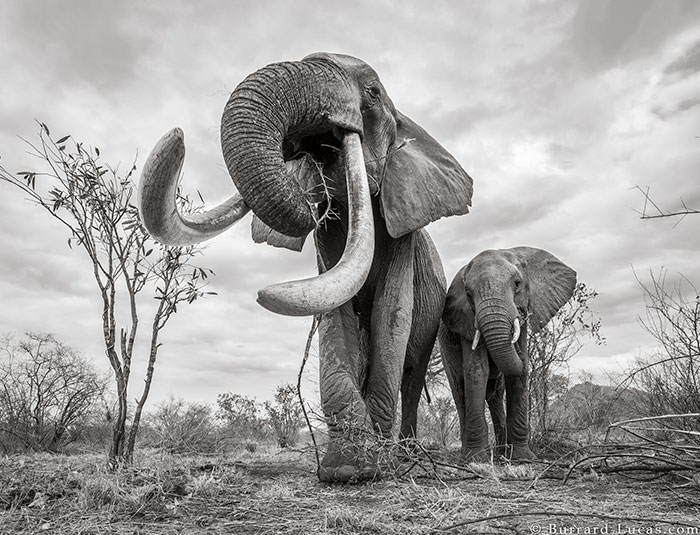
Image by Will Burrad-Lucas
Will took the images during his partnership with the Kenya Wildlife Service and Tsavo Trust, making use of his famous beetlecam.
“When I first saw her I was awestruck, for she had the most amazing tusks I had ever seen. If I hadn’t looked upon her with my own eyes, I might not have believed that such an elephant could exist in our world. If there were a Queen of Elephants, it would surely have been her.” – Will Burrard-Lucas
The Legend Of Elephant Tuskers
An elephant’s tusks are their second upper incisors – these grow continuously throughout their lives, an adult male’s tusks are known to grow up to 18cm (7in) per year. Therefore, the longer an elephant lives for, the larger their tusks will grow to be. “Tuskers” has a genetic variation which means their tusks grow even faster than usual, many of their tusks grow so large that they almost graze the ground as the elephant walks.
One of the most famous tuskers to ever have lived was known as Satao. He was born in Kenya’s Tsavo National Park during the 1960s and is thought to have been at least 45 years old when he was tragically shot by a poisoned arrow and killed. He was certainly one of Keny’s most well-known and iconic tuskers, his tusks were over 2 meters (6.5 feet).
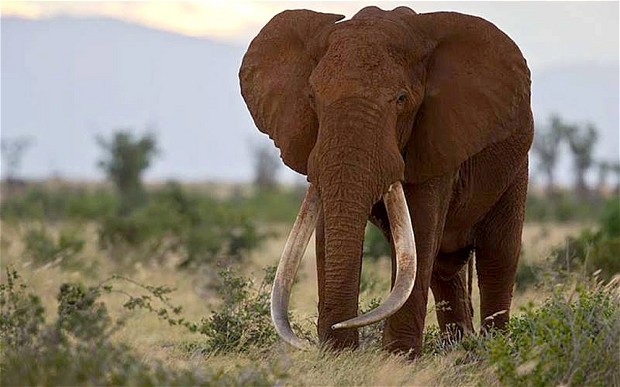
One of the last images of Satao, Kenya’s largest Big Tusker. Photo credit: The Telegraph
Satao was under near-constant surveillance by the Kenya Wildlife Service as well as The Tsavo Trust, he usually roamed a small area of the park but had started venturing further out and into more dangerous areas where poaching was high and ultimately, his tusks proved to be much of a temptation and poachers managed to kill Satao and remove his tusks, leaving him to be a victim of the terrible illegal ivory trade.
“A great life lost so that someone far away can have a trinket on their mantlepiece. Rest in peace, Old Friend, you will be missed.” – The Tsavo Trust
Over a third of the tuskers left in the world are found in Kenya’s Tsavo National Park – 10 of these are under careful guardianship of the trust who have the challenging task of keeping these precious animals safe. It is a privelidge to have these incredible animals roam the lands that we welcome our guests to, we would love to wlecome you to Kenya and have the chance of spending time with these gentle giants.
Make an enquiry below or get in touch with your usual travel agent.
The post East Africa’s Super Tuskers: The Last Photos of The “Elephant Queen” appeared first on Asilia Africa.
More Photography Articles

Guest Gallery: The Serengeti At Its Best
27 November 2019We recently had the pleasure of welcoming guests, Chris and Monique Fallows t...

Manja the rare melanistic serval: Our Namiri Plains’ celebrity
28 July 2021While exploring the grasslands close to Namiri Plains, you might be fortunate...

The Unique and Unusual: East African Safari Animals That Are Out of The Ordinary
27 September 2019By Britta Foulis – Content Marketing Manager On your next safari be sure to...

Guest Gallery: An Intimate Safari In The Mara
12 July 2019Asilia guest Petro Zouzoulas stayed at two of our properties during his East...





